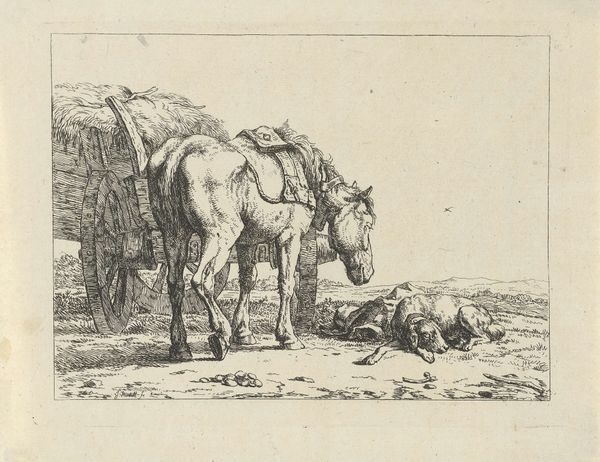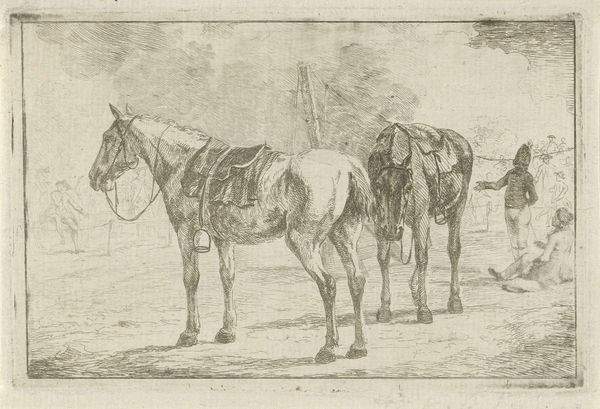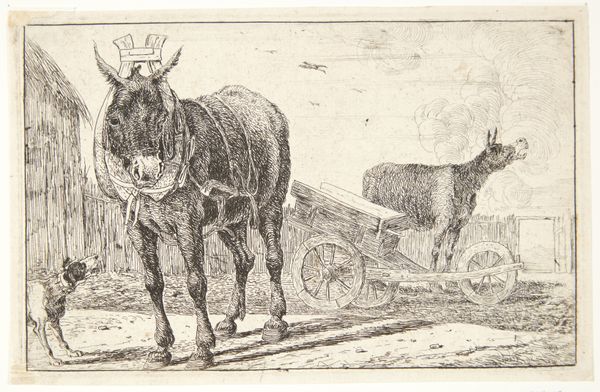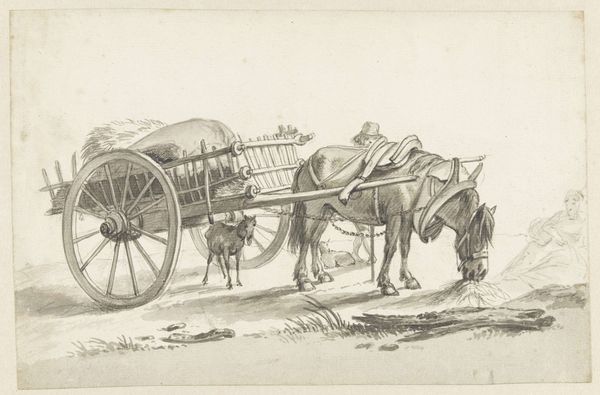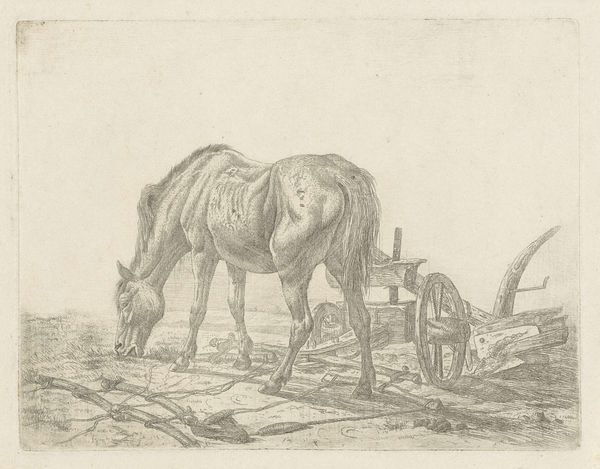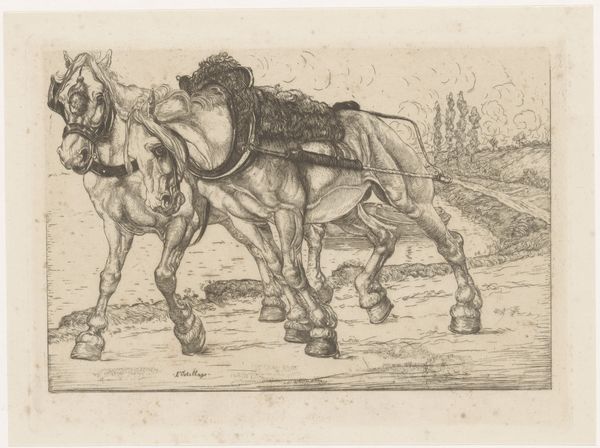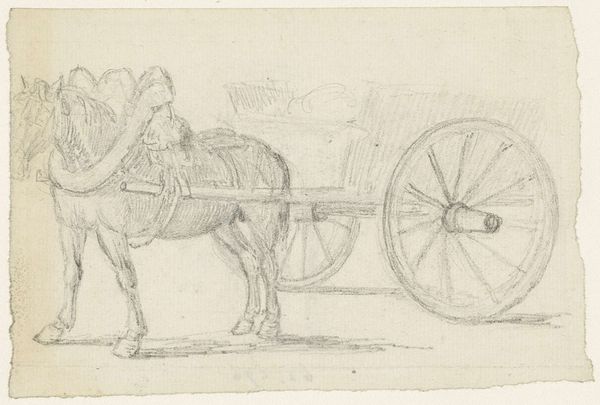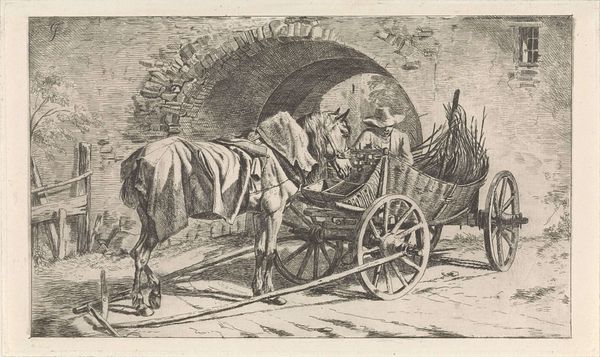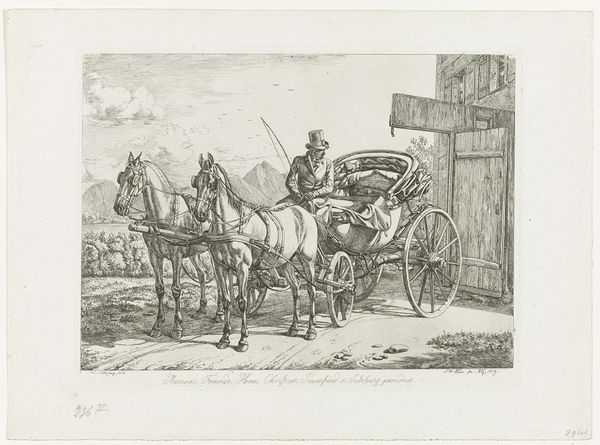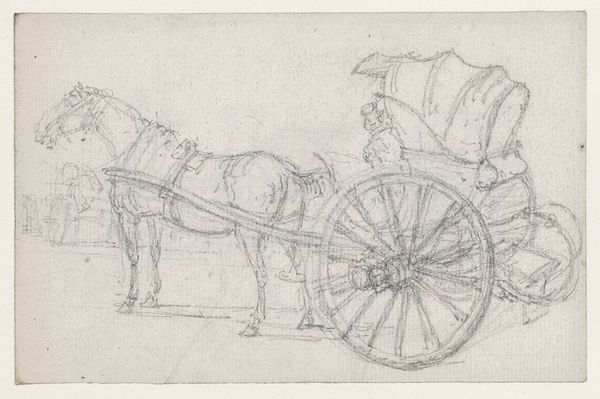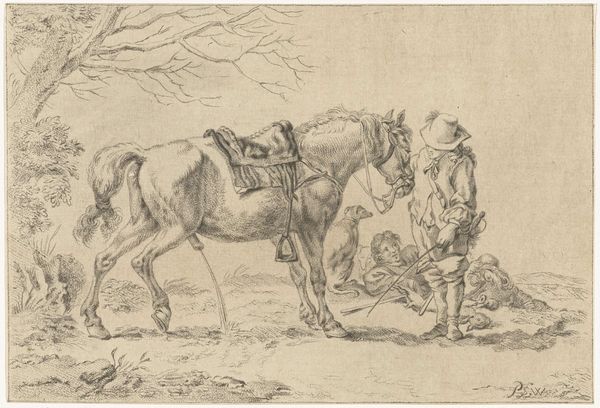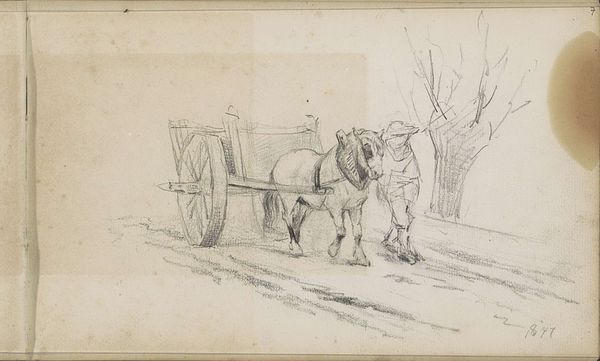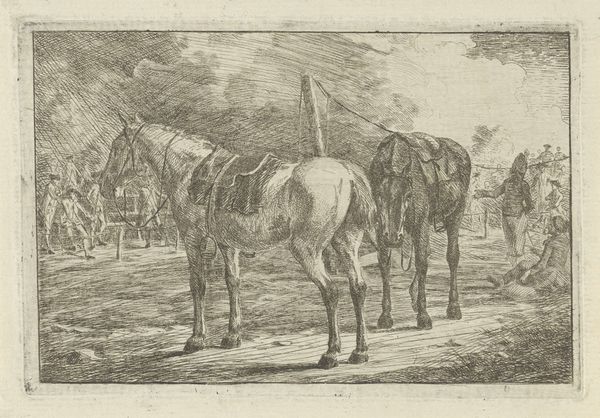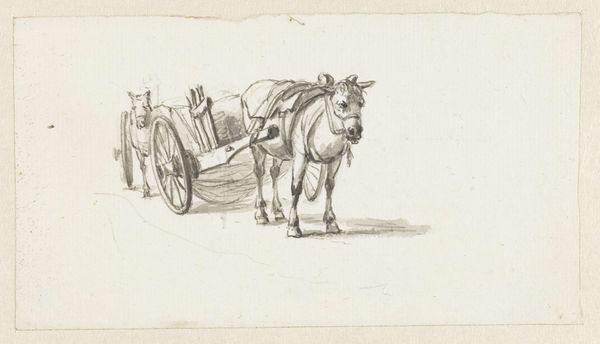
print, etching
#
baroque
# print
#
pen sketch
#
etching
#
landscape
#
genre-painting
#
realism
Dimensions: 109 mm (height) x 160 mm (width) (plademaal)
Editor: This is "Horse by a Two-Wheeled Cart," a print by Jan van den Hecke I, created sometime between 1619 and 1684. It's deceptively simple; the eye is drawn to the contrast between the weight of the horse and the delicate lines describing the cart. What structural elements stand out to you? Curator: Observe how van den Hecke employs a predominantly horizontal orientation in this print. The dominant lines are the ground, the cart, and the horse's back. This establishes a sense of grounding and stillness, a compositional stasis. However, this stasis is interrupted. Note how the diagonals introduced by the planks and the horse's legs disrupt the planar structure. How does this interruption function? Editor: It adds a sense of dynamism, right? Breaking the stable horizontals makes it feel less static, more lifelike. Like the horse might move. Curator: Precisely. Now, consider the interplay of light and shadow. Notice the concentration of hatching defining the form of the horse, juxtaposed against the lighter treatment of the background. What effect does this contrast achieve? Editor: It really emphasizes the horse, bringing it forward visually. It seems almost sculptural, doesn't it? Even though it's a print. Curator: Indeed. And what about the geometric structure of the cart versus the more organic rendering of the horse? Is there significance in the opposition of those shapes and forms? Editor: It highlights the artificial versus the natural, perhaps? One being rigid and constructed, the other fluid and alive. This has definitely altered how I perceive the piece. Curator: As the work so evidently lays bare, pictorial structures establish symbolic order and significance. What may at first have appeared simple is shown to evince dynamic sophistication.
Comments
No comments
Be the first to comment and join the conversation on the ultimate creative platform.
